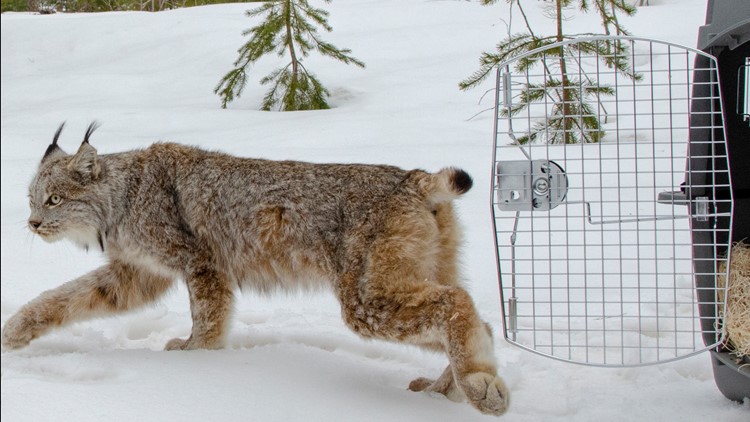BILLINGS, Montana — U.S. wildlife officials have agreed to keep federal protections in place for the snow-loving Canada lynx, under a court settlement approved Monday by a judge in Montana.
The settlement by the U.S. Interior Department comes after wildlife advocates sued to retain protections for the rare and elusive wild cats, which have been listed as a threatened species since 2000.
Under the Trump administration, officials said lynx had recovered in some areas and protections were no longer needed.
Independent scientists and wildlife advocates warned climate change could undo that progress by reducing lynx habitat and the availability of a key food source — snowshoe hares.
Canada lynx are about the size of bobcats, but with huge paws to help them navigate deep snow. There is no reliable estimate of their population. That has left officials to rely on information about lynx habitat and hare populations to gauge the species’ status.
Their protected status has interrupted numerous logging and road-building projects on federal lands, frustrating industry groups and Western lawmakers.
The 2018 move to end protections came when U.S. Fish and Wildlife Service biologists shortened the government's time span for considering climate change threats, from 2100 to 2050, because of what officials said were uncertainties in long-term climate models.
A government assessment based on that shortened time span concluded lynx populations remained resilient and even have increased versus historical levels in parts of Colorado and Maine.
The animals also are found in Montana, Minnesota, Idaho, Washington state and occasionally Michigan.
A new recovery plan for lynx is due by 2024 under the terms of the deal approved Monday by U.S. District Judge Donald Molloy in Missoula, Montana.
“This is the right decision, and the administration should be commended for it,” said attorney Matthew Bishop, who represents Friends of the Wild Swan, WildEarth Guardians and other environmental groups in the case.
“There's no uncertainty climate change is happening," Bishop added. "The only uncertainty is over the timing and magnitude of it. But that shouldn't keep a species from being listed."
Federal wildlife officials did not immediately respond to questions about the settlement.
Under an earlier assessment of lynx, published in December 2016, U.S. government biologists predicted some populations would disappear by 2100. That was based on models predicting widespread and substantial changes to the animals’ snowy habitat because of climate change.
A similar conclusion was reached by the agency in 2014 for another snow-loving creature — the North American wolverine. In that case, a federal judge rejected the government’s decision not to give wolverines protections, saying the animal was “squarely in the path of climate change.”
After reevaluating the issue, the Fish and Wildlife Service said last year that it was no longer seeking protections for wolverines. Agency officials said some areas of the Rocky Mountains will retain enough snow in a warming world for wolverines to successfully den and breed.
A legal challenge to the wolverine decision is pending.
Watch more Local News:
See the latest news from around the Treasure Valley and the Gem State in our YouTube playlist:



